Palm Tree Fusarium Wilt: Learn About Fusarium Wilt Treatment For Palms
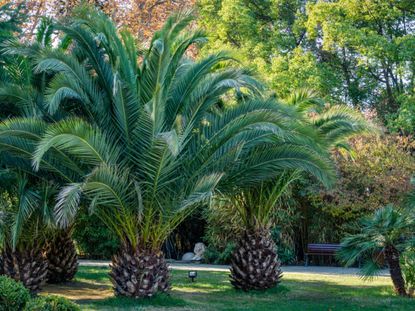

Fusarium wilt is a common disease of ornamental trees and shrubs. Palm tree Fusarium wilt comes in different forms but is recognizable by similar symptoms. Fusarium wilt in palm trees is host specific and has no cure. The end result in untreated palms is death. Learn how to treat Fusarium wilt in palms with a careful management program. If nothing else, careful hygiene and cultural practices can extend the life of the tree.
Causes of Palm Tree Fusarium Wilt
Fusarium wilt is caused by the fungus Fusarium oxysporum. The two main strains are Fusarium oxysporum f. sp. Canariensis, which only attacks Canary palms, and Fusarium oxysporum f. sp. Palmarum, which is found in several ornamental palms. The disease does the most damage in plants that are in dry regions. Plants growing in cooler, wetter areas will still show symptoms but decline and die more slowly. As a rule, plants with Fusarium wilt of palms should be removed but this is a big chore in some cases. There is no Fusarium wilt treatment for palms and the disease is contagious and can infect other plants nearby. The fungus responsible for Fusarium wilt in palm trees can persist in soil for years. Spores enter plants through the roots and travel into the vascular system. Fusarium attacks the xylem, reducing water uptake. Over time it closes up the water collecting tissue with a sticky substance that the fungus produces. Gradually, the tree will show signs of stress due to inadequate water. The pathogen can also spread through mechanical means. The most common ways plants are infected is from contaminated purchased trees and from unsanitary pruning practices. Tools with the pathogen on them can introduce it during cutting. It is, therefore, extremely important to sanitize tools before using them on another plant.
Symptoms of Fusarium Wilt of Palms
Because water introduction is interrupted, the fronds or leaves of the tree are the first to display signs of infection. Just as any plant’s leaves will droop and discolor when there is too little moisture, the fronds will turn yellow and finally brown, crinkle at the ends of leaflets and eventually die. The effect usually starts at the lower or older fronds and moves up the palm. A companion disease, called pink rot, hastens the dying process in many cases. It is an opportunistic fungus which only attacks old, weak or injured plants. Fusarium wilt treatment for palms must, therefore, start with an application of Thiophanate-methyl fungicide to stem the march of pink rot.
How to Treat Fusarium Wilt
Because there is no cure for the disease, the only course of action is careful management of the tree, unless you elect to remove it entirely. Provide supplemental water and clean up infected debris immediately. Do not try to compost infected material, as spores can still survive and infest your compost heap. Prune off dying fronds but disinfect tools before using them on other plants. Do not use a chainsaw and trim on a windless day to prevent infected sawdust from drifting over to healthy specimens. Hygiene is one of the most important facets of Fusarium wilt treatment for palms. Good water and nutrient sources for the tree can prolong its life for several years.
Gardening tips, videos, info and more delivered right to your inbox!
Sign up for the Gardening Know How newsletter today and receive a free download of our most popular eBook "How to Grow Delicious Tomatoes."

Bonnie Grant is a professional landscaper with a Certification in Urban Gardening. She has been gardening and writing for 15 years. A former professional chef, she has a passion for edible landscaping.
-
 Urban Composting Guide: How To Compost In The Middle Of The City
Urban Composting Guide: How To Compost In The Middle Of The CityUrban composting does not have to be daunting. You can compost in the city, and maybe even try some urban worm composting!
By Mary Ellen Ellis
-
 Shrub Diseases And Pests To Watch Out For
Shrub Diseases And Pests To Watch Out ForShrub diseases and pests can be challenging. Learn how to recognize and eradicate them before they can present a danger to your plants.
By Susan Albert
-
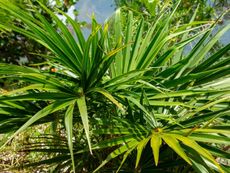 Florida Thatch Palm Facts – How To Grow Florida Thatch Palm Trees
Florida Thatch Palm Facts – How To Grow Florida Thatch Palm TreesGrowing Florida thatch palms is not difficult in the right climate. If these trees interest you, read on for more Florida thatch palm facts.
By Teo Spengler
-
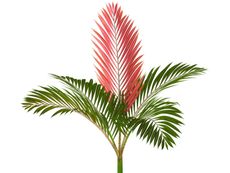 Red Leaf Palm Information – Learn About Growing Flame Thrower Palms
Red Leaf Palm Information – Learn About Growing Flame Thrower PalmsRed leaf palms are exotic and beautiful trees with leaves that grow in scarlet. If you’re thinking of growing these trees, click here for more information on red leaf palm care.
By Teo Spengler
-
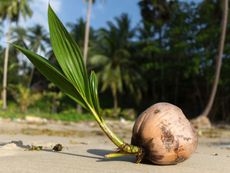 Palm Tree Seed Germination: What Does A Palm Tree Seed Look Like
Palm Tree Seed Germination: What Does A Palm Tree Seed Look LikePalm tree seed germination is not a matter of weeks but months or even years. Click here for more information on growing palms from seed.
By Teo Spengler
-
 Feeding A Palm Tree: Learn How To Fertilize Palms
Feeding A Palm Tree: Learn How To Fertilize PalmsPalm trees are planted as specimen plants for their exotic, tropical look. However, palm trees have high nutritional demands and the calciferous, sandy soil they’re normally grown in cannot always accommodate these needs. Click here to read more about fertilizing palm trees.
By Darcy Larum
-
Pink Rot On Palms: Tips For Treating Palms With Pink Rot Fungus
Pink rot fungus is a palm tree disease that infects damaged or weakened palms. Like many fungi, it is easier to prevent than it is to treat. Here are some tips on dealing with pink rot on palms. Click this article to learn more.
By Jackie Carroll
-
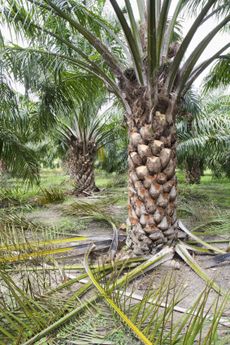 Pruning Palm Plants: Tips On Cutting Back A Palm Tree
Pruning Palm Plants: Tips On Cutting Back A Palm TreeCutting back a palm tree will not make it grow faster. This myth has caused gardeners to do extensive palm tree pruning that doesn't help and can hurt the tree. If you want to know how and when to prune a palm tree, this article will help.
By Teo Spengler
-
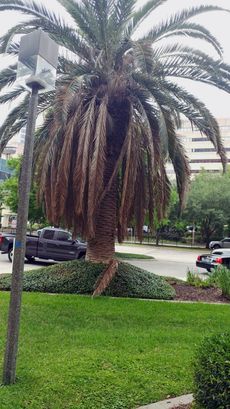 Palm Tree Dropping Fronds: Can You Save A Palm Tree Without Fronds
Palm Tree Dropping Fronds: Can You Save A Palm Tree Without FrondsThere are a number of reasons for palm tree fronds falling off, from natural "cleaning" to damaging cultivation, disease, and pest issues. If there are no fronds on a palm tree, the plant may be in real trouble but it is possible to still save it. Learn more here.
By Bonnie L. Grant
-
 What Is Lethal Yellowing Disease: Learn About Lethal Yellowing Of Palms
What Is Lethal Yellowing Disease: Learn About Lethal Yellowing Of PalmsLethal yellowing is a tropical disease that affects several species of palm. This disfiguring disease can devastate landscapes in South Florida that rely on palms. Find out about lethal yellowing treatment and detection in this article.
By Jackie Carroll